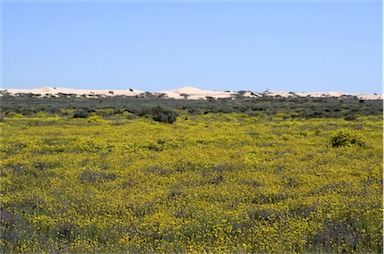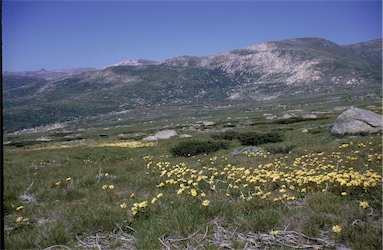Herbfields
Herbfields are plant communities dominated by herbaceous plants, especially forbs and grasses. They are found where climatic conditions do not allow large woody plants to grow, such as in subantarctic and alpine tundra environments or in arid regions where they are often seasonal.
Herbfield is defined in New South Wales (Australia) government legislation as native vegetation that predominantly does not contain an over-storey or a mid-storey and where ground cover is dominated by non-grass species. The New Zealand Department of Conservation has described herbfield vegetation as that in which the cover of herbs in the canopy is 20–100%, and in which herb cover is greater than that of any other growth form, or of bare ground.
Alpine Herbfields are defined in NSW legislation as: Low herbfields dominated by forbs and grasses with scattered shrubs in rocky sites. The dominant herbs in this class are daisies with rosettes of leaves. These together with abundant tussock grasses form an almost continuous cover over the landscape, generally no more than about 0.3 m tall. (often overlapping with Alpine Shrublands)
![]() Herbfield Photos from the Australian Plant Image Index
Herbfield Photos from the Australian Plant Image Index
Sources: Australia's Native Vegetation - from rainforest to spinifex, map and information poster produced by the National Land & Water Audit, Natural Heritage Trust, Australian Government, 2001
https://en.wikipedia.org/wiki/Herbfield
http://www.environment.nsw.gov.au/threatenedspeciesapp/VegClass.aspx?vegClassName=Alpine+Herbfields
Map:
Structure diagram: modified from Atlas of Australian Resources - Vol. 6, Vegetation,
AUSLIG, Canberra, 1990
![An Australian Government Initiative [logo]](/images/austgovt_brown_90px.gif)




 Foliage cover of tallest stratum 10 - 30%
Foliage cover of tallest stratum 10 - 30%